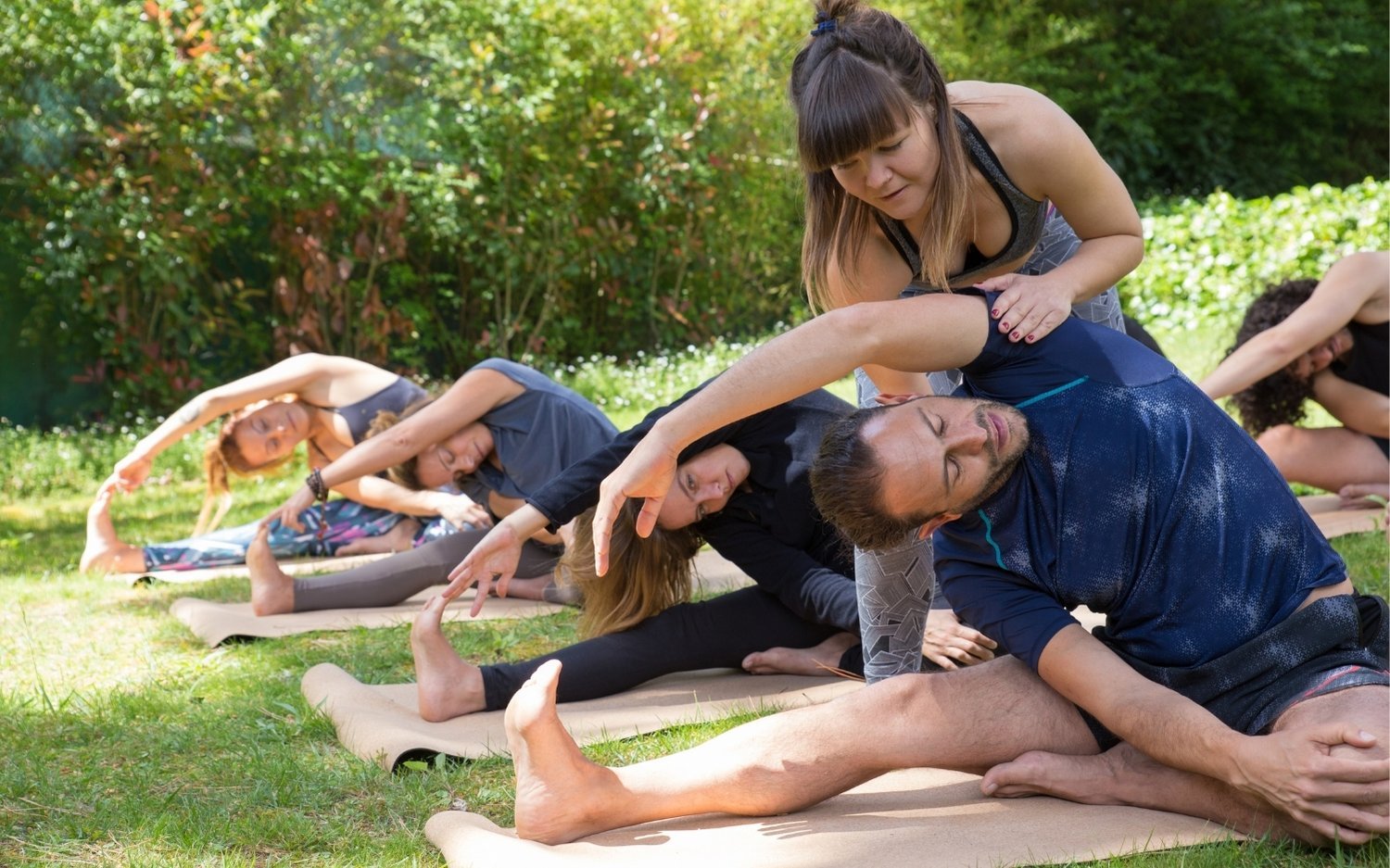Your First Year Teaching Yoga:
What No One Tells You About Money, Marketing, and Motivation

Your first year teaching yoga can feel like a whirlwind — equal parts excitement, learning curve, and reality check. You may have envisioned a smooth transition from training to a thriving career, but the truth is that the early months are often filled with unexpected challenges. From figuring out how to earn enough to cover your expenses, to finding students who keep coming back, to maintaining your own passion for the practice, the first year is about far more than cueing postures.
In this guide, part of The Ultimate Guide to Yoga Teacher Training: Challenges and How to Overcome Them, we will explore three areas that make or break your early teaching experience: money, marketing, and motivation. You will learn how to set realistic income expectations, attract and retain students without feeling like a salesperson, and protect your own energy so you can stay inspired. These lessons will help you navigate the post-training transition with clarity and confidence.
The Money Realities of Year One
Many new yoga teachers are surprised by just how modest the earnings can be in the first year. In the United States, part-time teachers averaging four classes per week often bring in between $5,000 and $8,000 annually. This is enough to begin recouping your training investment but far from a full-time income.
Multiple income streams make the difference. Alongside teaching at studios, look into:
- Subbing at other studios to build connections and gain experience
- Leading classes at gyms, community centers, or corporate offices
- Offering private lessons or small group sessions
- Running specialty workshops or themed series
- Creating online classes, courses, or memberships for added scalability
Plan ahead for taxes and savings. Most teachers are independent contractors, meaning you are responsible for setting aside taxes yourself. A safe approach is to save a percentage from each payment and consider allocating 10% toward long-term investments or retirement.
Finally, expect fluctuations. Class sizes and income can vary dramatically depending on the season, holidays, or even the weather. Budget conservatively and track your earnings with simple accounting tools so you can see the bigger picture.
Marketing That Actually Works

The fastest way to fill your classes is not through aggressive self-promotion, but by building genuine connections. Listen to your students first. Understand their needs before introducing new classes or services. This creates trust, the foundation of any sustainable teaching business.
Ways to grow your reach and reputation:
- Sub at studios where you want to be on the permanent schedule
- Tap into networks like gyms, wellness centers, and community boards
- Host workshops or themed classes to attract new faces
- Encourage referrals by asking satisfied students to invite friends
- Build an email list so you can share updates, schedules, and tips directly with your audience
A consistent teaching schedule combined with authentic branding and student testimonials will help create a loyal community. As you gain confidence, do not shy away from teaching online or offering memberships. This not only broadens your reach but also creates scalable income potential.
Staying Motivated and Avoiding Burnout

The first year comes with emotional highs and lows. You might feel imposter syndrome when standing in front of a class, or stage fright when speaking in a room full of strangers. Preparation, practice, and self-reflection are your best tools for building confidence.
Keys to staying inspired:
- Protect your own practice so you stay connected to why you teach
- Limit your schedule to a manageable number of classes per week
- Celebrate small wins — a student breakthrough, a full class, a kind word
- Revisit your core values when motivation dips
- Prioritize recovery and say no to overcommitment
Yoga teaching is a long game. Motivation ebbs and flows, but staying intentional about self-care and reflection will help you sustain both your energy and your love for the work.
Final Thoughts
Your first year as a yoga teacher is as much about entrepreneurial skills as it is about sharing the practice. Financial freedom rarely comes overnight, and the most successful teachers blend patience with strategic action. By diversifying your income, connecting authentically with students, and protecting your own well-being, you will set the stage for long-term success.
For more insights into building a sustainable teaching career, explore The Ultimate Guide to Yoga Teacher Training: Challenges and How to Overcome Them
